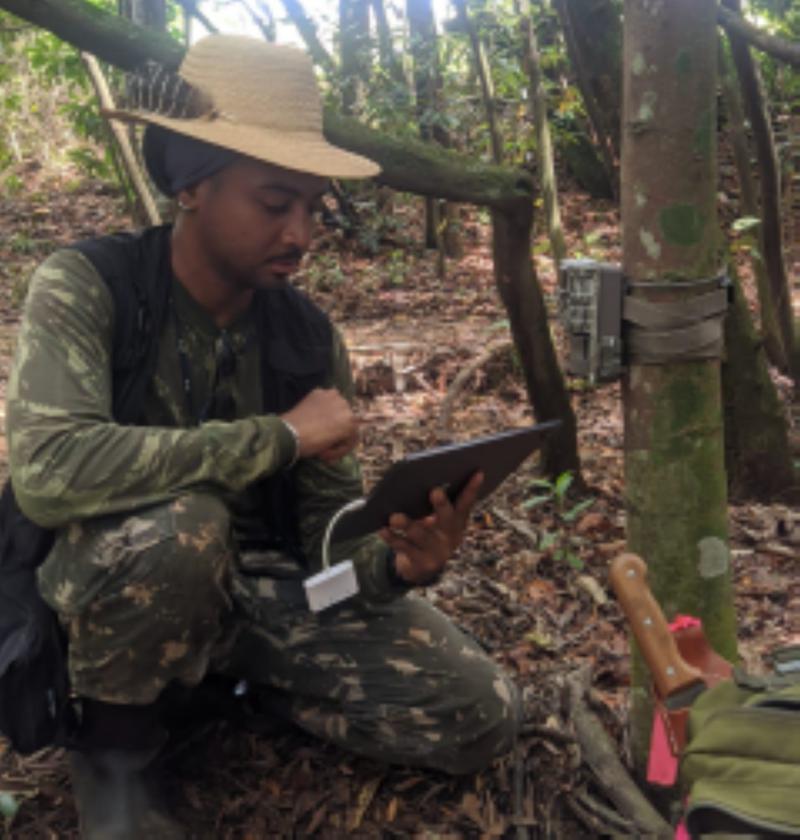Filipe Guimarães Lima
Wild animal populations are declining worldwide due to land-use change caused by human-driven activities. Habitat loss, degradation, and fragmentation alter the habitat use and selection and movement patterns by species, mostly the large ones like terrestrial mammals. In this context, the establishment of protected areas connected through ecological corridors is an amazing opportunity to increase the area available for species by promoting connectivity for mammal populations. In the Brazilian context, legal instruments create the ecological corridors, and the process can be assisted by geospatial analysis and landscape metrics, or through biological data, for an effective designation. Therefore, the research outcomes are essential to effective conservation efforts and policy making.

Filipe Guimarães Lima using a tablet to check out the records and camera trap functioning in the field.
Central Brazil is covered majorly by the Cerrado biome, a fire prone region that presents a regular fire regime. However, anthropogenic impacts driven by the advances of agriculture and ranching are altering the landscape structure and the natural fire regimes, thus affecting the space use of multiple species. The Serra de Caldas Novas and the Mata Atlântica State Parks (PESCaN and PEMA, respectively, in Portuguese) are in an ecotone region between the Cerrado and Atlantic Forest in the South of the State of Goiás, which are under the effects of land-use change and human-caused fires. Both Parks are regionally very important, PESCaN has a key role in water supply for the surrounding cities, and PEMA is the only Atlantic Forest protected area in the state.
The state environmental department of Goiás intends to establish a corridor to connect both Parks, and their chiefs proposed to our research team to develop a project to gather data for better planning and designing the corridor focusing on suitable habitats for mammals. We will conduct different approaches that together will guide the corridor establishment as well as parks management, pointing out areas that are promising or that need more effort in restoration/recuperation. We will use 76 camera traps to survey the medium and large mammal community in PESCaN, which includes private rural areas within the corridor region, as well as in PEMA, for two years. We will correlate the species records with the regional fire history and other environmental variables, such as land use and cover, distance from roads, slope, and assess the functional diversity of the mammal community, the occupancy for the maned wolf (Chrysocyon brachyurus) and the effect of domestic dogs on space use of the native mammals, across different habitat gradients.